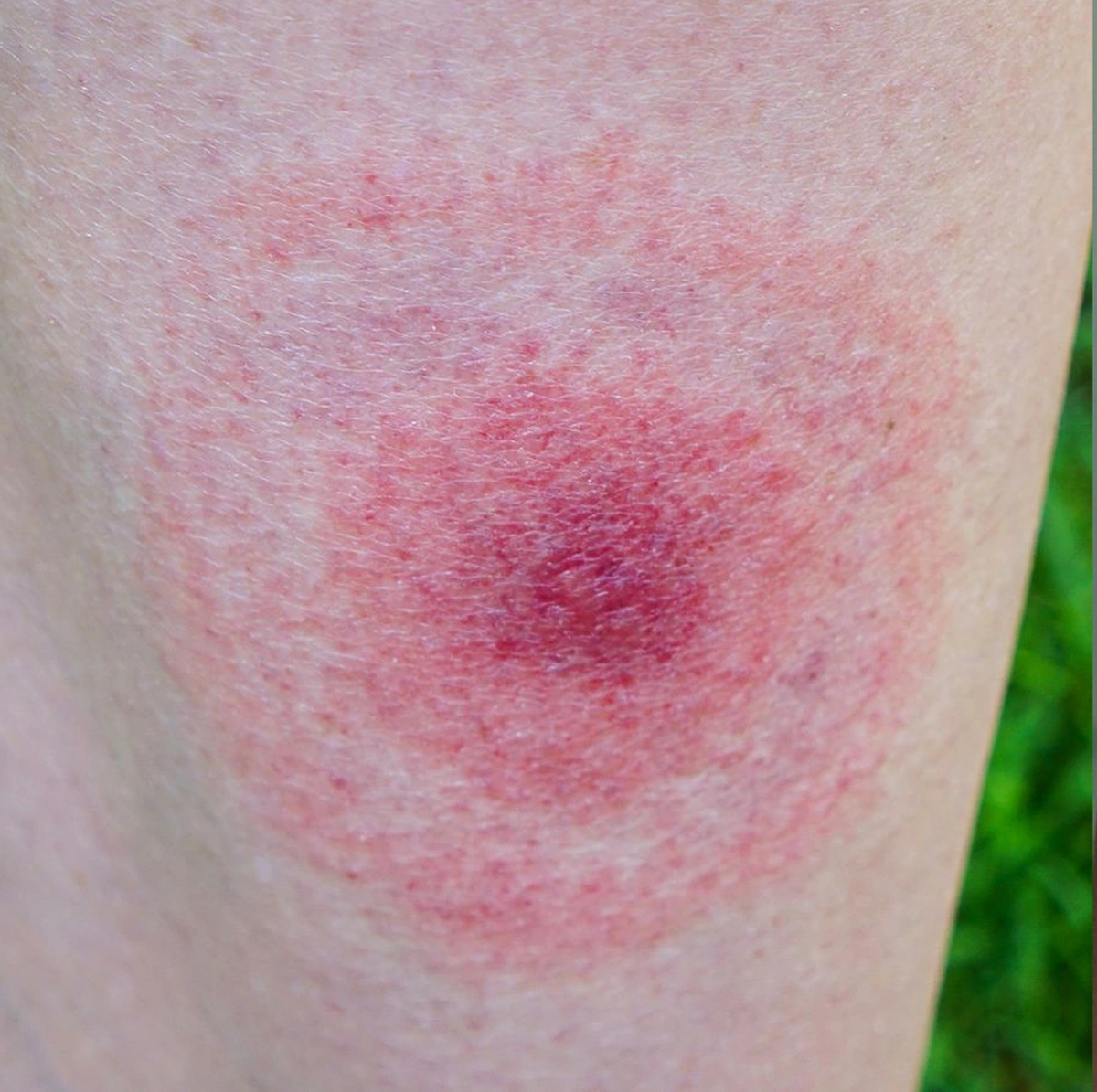Ever Woken Up Wondering?
Have you ever rolled out of bed, caught a glimpse of your arm, and thought, “What on earth is that?” Not just a basic, itchy dot—nope. It’s a bug bite, but this time… there’s a bruise around it. That scary, purple-ish, mystery mark that sends you straight to overthinking land? Been there. Sometimes it’s after a weekend at the lake; sometimes it’s just a random Tuesday. You’re not alone. And while a little bite might not seem big, those bruises can leave you full of questions (and let’s be real—a little freaked out).
Today, let’s talk about the real deal behind bug bite with bruise around it pictures. No judgment, no medical jargon you need a PhD for. Just the facts, some stories, and a little peace of mind. Sound good?

Why Do Some Bites Bruise?
Let’s get into the weird science. Normally, a bug bite gives you redness and swelling, maybe a bit of itching—then it’s over. But bruising? That’s next-level. Sometimes it’s just your body’s response to the bite (think: teeny-tiny blood vessels under your skin get angry and leak a little), or it could be a sign of the bite being stronger or your reaction being, well, extra. According to research on what kind of bug bites leave bruises (like mosquitoes, ticks, spiders, and even hornet or wasp stings!), it’s not as rare as you might think.
Have you noticed your mosquito bites sometimes go from annoying red bumps to these spooky, smudgy purple circles? Keep reading… we’re about to play detective.
Tick Bites: Bullseye, But Make It Bruised
Ticks… they’re the tiny jerks no one invites to the party, but they show up anyway—especially if you hang out in tall grass or wooded trails. Out of nowhere, you’ll spot a red “target” or bullseye-shaped rash that might also look bruised around the edges. That’s a classic “Lyme alert!” moment, but honestly, not every tick bite means disaster.
Here’s the scoop: sometimes a tick bite leaves bruising because they latch on for hours, even days—and your skin reacts to all that drama. Sometimes you get a dime-sized red spot with a ring of purplish skin. Other times, no issues at all. But if it’s tender, swollen, or you’re feeling off (fever, chills, aches), it might be time for a checkup. Ticks can bring more than just a rash: Lyme disease, ehrlichiosis, or other “fun” surprises can show up days after a bite according to experts on insect bite images.

How Do You Know It’s a Tick?
Is the bite somewhere weird, like behind your knee or in your scalp? Is there a tiny black dot still stuck? (Gross, I know.) Did you just go hiking or camping? Look at the Bug bite identifier to compare. Even if the tick’s gone, those bug bite with bruise around it pictures can be a dead giveaway—especially if you see that expanding rash or bruising.
My Story: The Backyard Camouflage Artist
My friend Max once found a tick on his stomach after a Saturday spent under the trees. The bite became a bruised ring, but he brushed it off. A week later? Joint pain and a weird fever. It was early Lyme… but he caught it, thanks to a Google rabbit hole and—yep—a photo comparison. Trust your gut, not just your itch.
Spiders: The Drama Queens of the Bite World
Good news: most spiders just want to mind their business (and eat flies). But once in a while, you meet the drama queens—like the brown recluse or black widow. They can give you a bite that turns red, then purple as bruising sets in. If you ever see a bite with a blueish or purple area in the center, maybe with a crater or ulcer (yikes)—head’s up, this could be serious.
According to the Healthline chart on bug bite bruises, spider bites can hurt, itch, and lead to more severe symptoms: muscle cramps, sweating, fever, or nausea. Not every spider is a villain, but those bug bite with bruise around it pictures from real folks online? They’ll make you pay attention, for sure.
:max_bytes(150000):strip_icc()/VWH-DermNetNZ-SpiderNecrosisBite-01-310feea28e6f440c8ff97e92950e3cda.jpg)
Not All Spider Bites Get Nasty…
But when they do, you’ll know. Two tiny puncture marks, rapidly-growing bruise, and your skin gets angry—sometimes it even blisters. Keep an eye out on the Types of bug bites Chart for side-by-side photos, because let’s face it: sometimes the difference between a regular bite and a venomous one is all about the bruise.
Quick Table: Bruising Bug Bites
| Insect | Bite Appearance | Pain or Symptoms |
|---|---|---|
| Tick | Bullseye, purple ring | Itchy, sometimes fever |
| Spider | Purple center, possible blister | Burning, pain, nausea (rare) |
| Mosquito | Red bump, can bruise in sensitive skin | Itchy, puffy |
| Hornet/Wasp | Red, swollen, sometimes bruised | Sharp pain, sting |
(P.S. If you’re still not sure, drop your photo into the Bug bite identifier—it can help narrow down your skin saga firsthand.)
Mosquito Bites: When Simple Turns Spooky
We expect mosquito bites, right? Itchy, swollen, pink… and then gone. But sometimes, for the lucky few (sigh), the bite bruises. Why? It’s usually a combo of your immune response and maybe a minor vessel getting pinched in the chaos. People who scratch a lot (guilty) have a higher chance of purple marks showing up after the fact based on mosquito bite pictures.

Wait, Is That Normal?
Ever had that moment where you’re like, “Did I get bit or did I walk into a doorknob?” The location can give it away. Mosquitoes love exposed skin—ankles, arms, the back of your neck. Compare your bite with bug bite with bruise around it pictures. Still not sure? There’s always the trusty Bug bite identifier.
Once at a Family BBQ…
I was at this outdoor barbecue, everyone swatting mosquitoes, business as usual. The next day, I woke up with a red bite—but the bruise was bigger than my thumbnail. Everyone else had plain old bumps. Why? My skin just over-reacts. My doctor laughed and said, “maybe don’t itch so much next time?”
Hornets, Wasps & Horseflies: The Heavy Hitters
Not all bruising bites come from the sneaky guys. Sometimes, you know you’ve been attacked because…well, it hurts. A lot. Hornets, wasps, and horseflies have bites and stings that instantly burn and swell up—sometimes with a bruise spreading out as your skin recovers from the “attack.” Your arm or leg might puff up, and as the swelling fades, you’re left with a smudgy purple ring, like a not-so-great tattoo.
Wasps and hornets cause this through sheer force; horseflies do it because their bites are like tiny scissors. And, of course, some stings leave a little bruise just from the trauma. If the bruise spreads fast or the pain ramps up, though? Treat it like a big deal, not a badge of honor.
Is It Dangerous?
Short answer: usually not. Annoying and ugly? Yes. Life-threatening? Rare. But if your bite or sting gets freaky—lots of redness, swelling that won’t quit, or you catch yourself saying “why am I dizzy?”—it’s doctor o’clock. And check out the Types of bug bites Chart for bite comparisons, just in case you want to one-up your group chat.
Some Real-Life Scene Stealers
– Horsefly: Those lakeside walks? One bite, big bruise, swelling for days.
– Wasp: Quick zap while gardening, red spot, then a bruise the size of a quarter. My friend’s grandma puts onions on hers… can’t say it works, but it’s a story.
When Should You Worry?
Okay, a little bruise is no biggie (annoying, but no panic). But if you start feeling sick, the bruise spreads like wild, or the bite is hot and red and you’re getting chills? Stop scrolling, call your doctor, or head to urgent care. Prevention’s bug bite guide says it’s especially important with ticks—Lyme sneaks up slowly. Allergic reactions, or bites that start to ooze, definitely mean “go now.”
Top Signs to Watch For
- Bruise is getting bigger or turning odd colors.
- Pain is out of proportion. (The “I can’t sleep” kind, not your usual annoyance.)
- There’s pus or red streaks away from the bite.
- You develop a fever, trouble breathing, or dizziness.
If all else fails, a clear picture goes a long way at the doctor—or upload it to the Bug bite identifier. Trust me, it relieves a lot of the “is this nothing or is it…something?” anxiety.
A Quick Storytime
One summer, I got a tick bite near my ankle. I thought, “Eh, whatever”—then a bruise appeared, and my calf got stiff. Luckily, I listened to that inner “maybe get this checked” voice. Turned out, early treatment saved me from a bigger adventure (and not the good kind).
Self-Care: It’s Not Rocket Science
Most bug bites heal fine with just a little TLC. For bruised bites, try this plan:
- Wash the area gently.
- Ice it for 10-20 min every hour or so for the first day.
- Take antihistamines if it itches.
- Leave blisters alone (don’t pop anything!).
- Snap a photo every day to watch for changes—compare with bug bite with bruise around it pictures on legit health sites, or try the Bug bite identifier.
I know—everyone’s grandma has their own trick. Baking soda, honey, oatmeal, onions. Some might help, lots are placebo. But if it makes you feel better, and it’s safe? Why not.
You’ve Got This: Spot, Snap, Treat, Repeat
Skin mysteries are part of summer, camping, or even everyday life. Bruises around bug bites can look wild, but most of the time, they’re your body’s “drama response”—for better or worse.
What really matters? Knowing which bug bites can bruise (ticks, spiders, mosquitoes, hornets…) and how to compare your marks to trusted bug bite with bruise around it pictures. The Types of bug bites Chart is a lifesaver for curious (or worried) minds. If you’re ever in doubt, upload a snap to the Bug bite identifier so you can move from “uh, should I panic?” to “okay, I’ve got this.”
My advice? Don’t ignore your skin’s SOS alerts, but don’t spiral, either. Keep ice packs (and anti-itch cream) handy. Trust those little warning bells, especially if the bruise or bite gets worse. Adventures are way more fun when you’re not stressing over a spot.
What’s the weirdest bite you’ve had, and did you figure out what caused it? Leave a comment, share your story. You never know—your experience could be the thing that helps someone else solve their next bug-bite mystery, too.


















Leave a Reply
You must be logged in to post a comment.